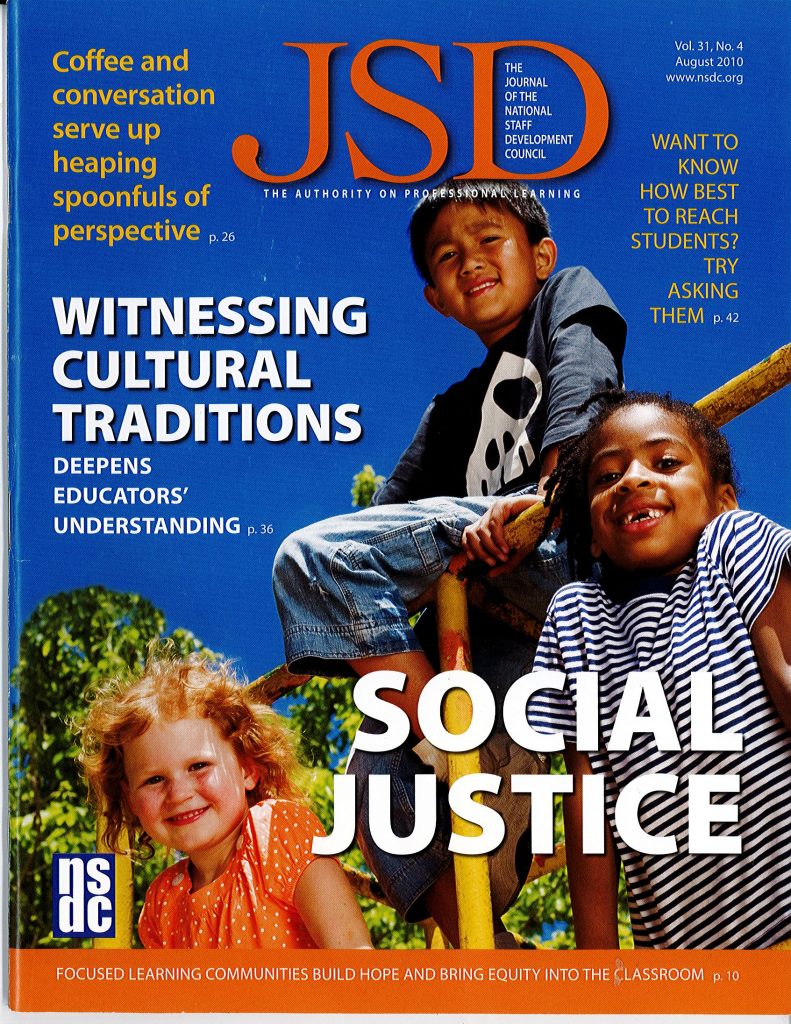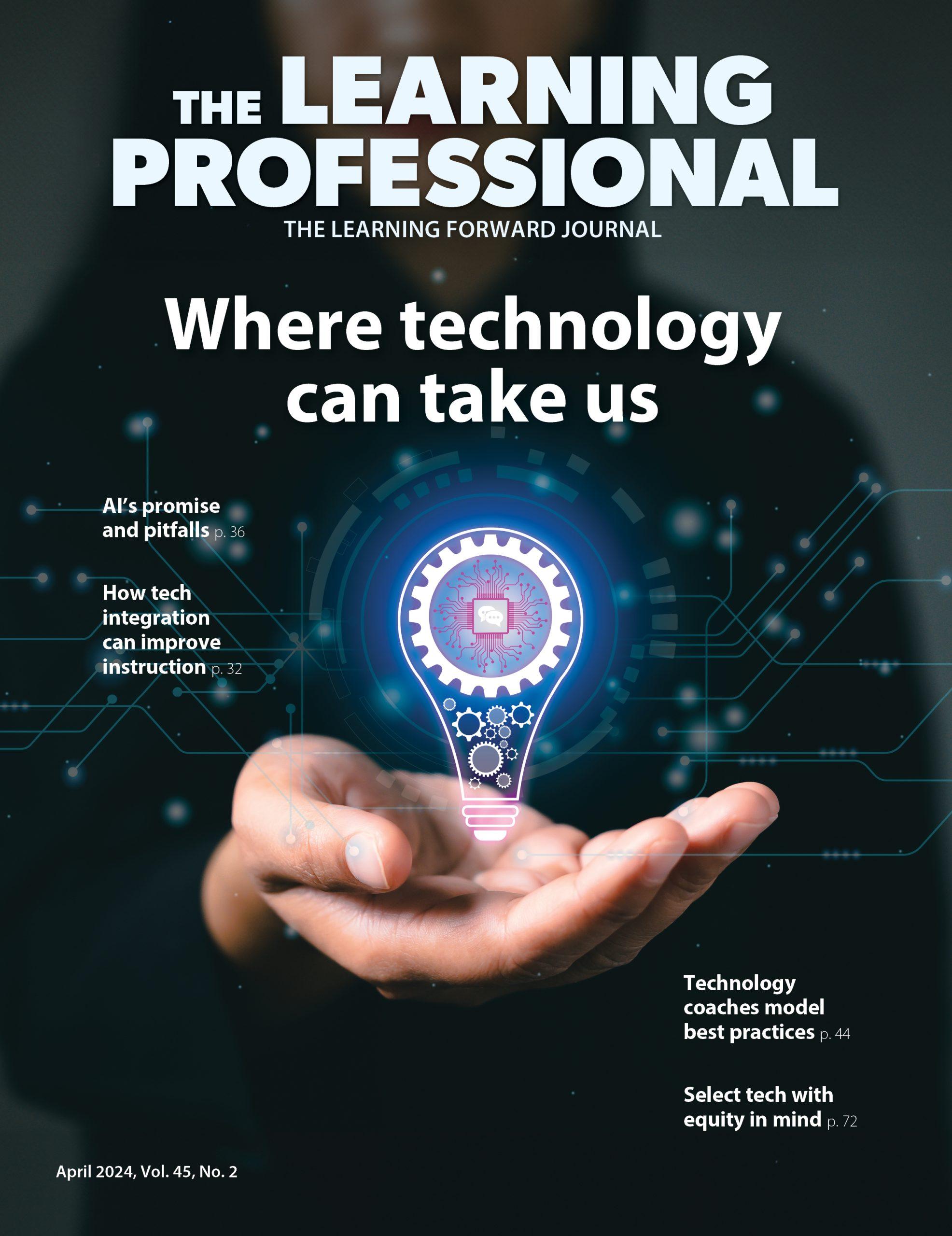
Social Justice
August 2010
Read the remaining content with membership access. Join or log in below to continue.
Sed ut perspiciatis unde omnis iste natus error sit voluptatem accusantium doloremque laudantium, totam rem aperiam, eaque ipsa quae ab illo inventore veritatis et quasi architecto beatae vitae dicta sunt explicabo. Nemo enim ipsam voluptatem quia voluptas sit aspernatur aut odit aut fugit, sed quia consequuntur magni dolores eos qui ratione voluptatem sequi nesciunt. Neque porro quisquam est, qui dolorem ipsum quia dolor sit amet, consectetur, adipisci velit, sed quia non numquam eius modi tempora incidunt ut labore et dolore magnam aliquam quaerat voluptatem.
In This Issue
ARTICLES
Essentials
As federal lawmakers take up the reauthorization of the elementary and secondary education act (NClB), a Broader, Bolder approach to education has laid out six key principles for consideration.
Social justice in schools requires difficult conversations and clear vision
A story from my school board experience illustrates how understanding of this topic evolves. During my school board tenure, state testing assumed new levels of significance. Our state department of education (pre-NCLB) disaggregated student test results by gender, race, free and reduced lunch eligibility, English language learners, and disabilities. The state education agency then announced school rankings determined by a formula that considered test scores across subjects as well as the categories above.
How a framework for reaching out to boys helped Boston make social justice progress
In its October 2006 policy brief, Are Boys Making the Grade? Gender Gaps in Achievement and Attainment, the Rennie Center for Education Research and Policy noted that the gender gap is real and has a negative effect on boys, most notably black and Latino boys.
Through students' eyes
Like most policies and practices in education, agendas for achieving social justice in classrooms are defined and pursued by adults. Missing are the perspectives of those most directly affected by what educators decide and do: students. Research tells educators how to support diverse students’ learning and thus to foster more equal opportunities for school success.
Tradition becomes the teacher
One way to approach the improvement of instruction is for educators to learn from student interactions in cultural events that fully engage students’ motivation and curiosity. In such a context, educators get to know students in new ways and to connect student strengths to classroom instruction. This can be especially powerful when the learning context is a shared and collaborative experience among educators.
The long and winding road to social justice
In working toward social justice in schools, we encounter people at different places on the continuum. Educators in our large, primarily white, suburban school district — Parkway School District in St. Louis, Mo. — range from the resistant to the eager reformer. Our challenge over the last year has been to address the data and move our staff to a place where we can say that we will reach and teach all children.
A large cup of insight
A couple of years ago, a few minutes after watching a teacher and student spiral into what might be called a spirited discussion about respect, I made a mistake. Fifty-six years old, with a shiny new conflict resolution master’s degree and 20 years of improv and facilitation experience, I thought I could handle a difficult dialogue.
Coaches root out deep bias
The National Equity Project helps educators examine their own perspectives on the pathway to addressing issues of race, class, and culture.
The challenge for educators
Seattle Superintendent Maria Goodloe-Johnson spoke at NSDC's Summer Conference in Seattle in July. Goodloe-Johnson shared her insights on the role of professional learning in reaching all students in a diverse urban district.
Up close
One starting point for understanding how different groups of students perform relative to their majority peers is a series of reports from the Center on Education Policy. Three recent reports discuss the educational needs of African-American, Latino, and Asian-American students. The reports reflect the growing national concern about the need for education and policy leaders at all levels to more aggressively improve the quality and effectiveness of these students’ educational opportunities.
Digging deeper
I’ve never heard an educator in a high poverty school or district dispute whether his or her school needs to improve. The discussion is always about how and how much. And in all sorts of communities, while some people are satisfied with incremental improvements, others will not rest until every child experiences the nurturing and challenge he or she deserves.
Building hope, giving affirmation
A school that ensures that all students — regardless of race, creed, color, socioeconomic status, gender, or disabilities — have access to and receive the highest-quality education has achieved a key measure of social justice (Cochran-Smith, 2009; Curren, 2009).
Abstracts
Building hope, giving affirmation: learning communities that address social justice issues bring equity to the classroom.Read the remaining content with membership access. Join or log in below to continue. Sed […]
A better way to measure
Just when educators are learning more about what constitutes effective professional development, a collaborative team of education researchers and practitioners have developed, tested, and implemented a cost-effective method of measuring and reporting on the quality of teacher professional development.
What teachers want
We are now well into the 21st century and as a nation are clamoring for change and opportunity. What does this mean for public school educators? As a group, are we moving rapidly into the future, or are our systems rooted in the past? Most importantly, what development opportunities do experienced and novice educators alike perceive as necessary to move our systems into a new era?
Welcome to JSD - please make yourself uncomfortable
For those of us who work on JSD, each issue is a learning journey. We alk about the meaning of thevwe use, from whom we want to learn, which articles […]
Carefully planned campus visits encourage middle schoolers to feel college-bound
Campus visits are a common approach to preparing students for college. In many cases, students and their parents research potential colleges and then visit a select few to help make a final decision about which college to attend.
nsdc.org
Site highlights
Collaborative culture
The mission of the Corpus Christi Independent School District is to develop the hearts and minds of all students. It does our community little good to try to educate our students on academics without developing the heart to connect students to each other and to the community as a whole.
Recent Issues
CURRICULUM-BASED PROFESSIONAL LEARNING
October 2024
High-quality curriculum requires skilled educators to put it into practice. Professional learning can ensure instructional materials lead to excellent teaching and learning.Read the remaining content with membership access. Join or […]
LEARNING TO PIVOT
August 2024
Sometimes new information and situations call for major change. This issue shows how professional learning helps educators pivot, by bridging the gap between knowing better and doing better.Read the remaining […]
GLOBAL PERSPECTIVES
June 2024
What does professional learning look like around the world? This issue explores what educators can learn from each other across geographic borders.Read the remaining content with membership access. Join or […]
WHERE TECHNOLOGY CAN TAKE US
April 2024
Technology is both a topic and a tool for professional learning. This issue examines benefits, challenges, and what learning leaders need to know.Read the remaining content with membership access. Join […]






